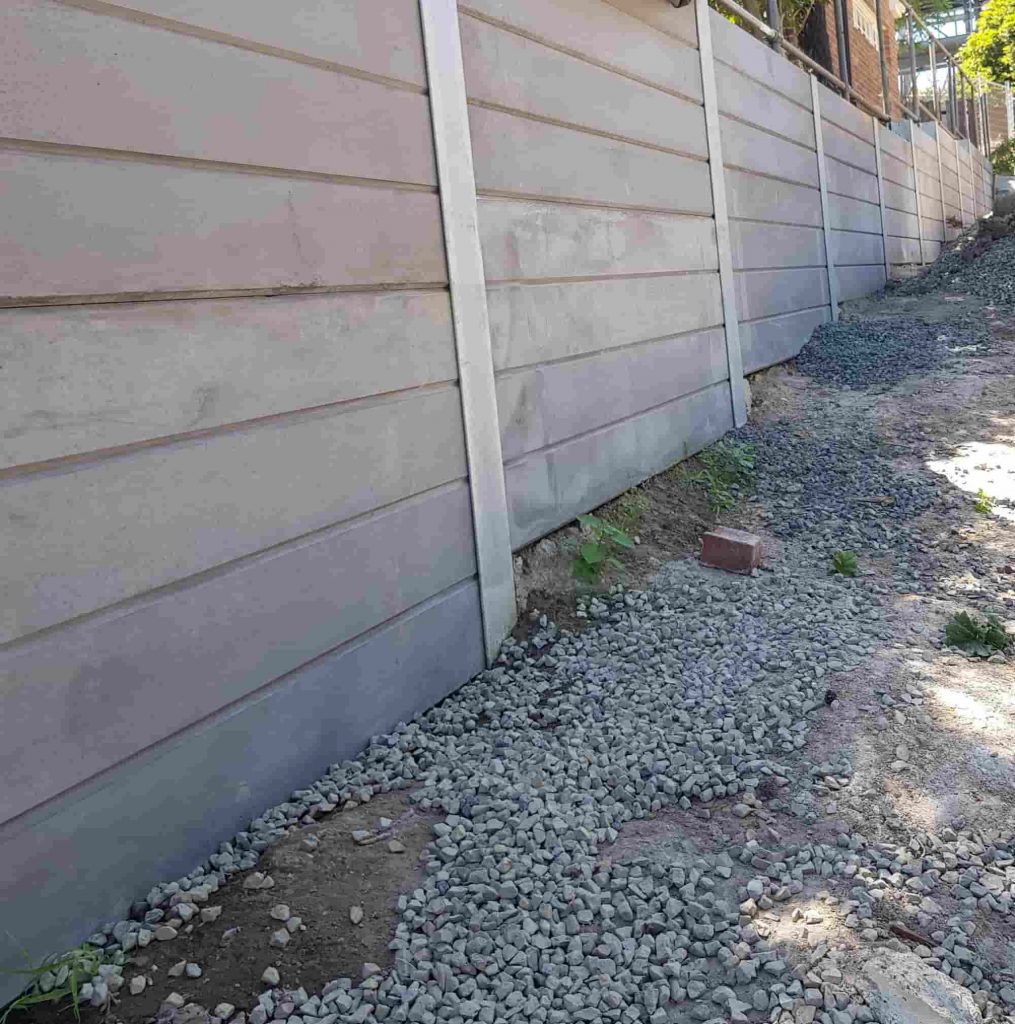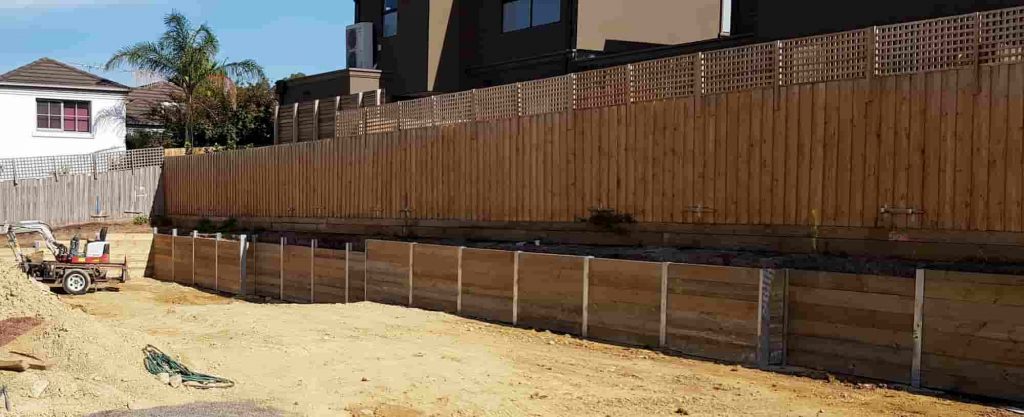Introduction
Building a retaining wall isn't practically stacking stones or putting concrete; it's a calculated venture that requires competence, preparation, and the ideal products. Retaining wall builders play a vital function in guaranteeing your structure stands strong versus the test of time and nature. Whether you're considering a simple wooden sleeper wall or a robust concrete option, comprehending the nuances of retaining walls can save you time, money, and headaches down the road. This article will dive deep into the secrets to a long-lasting structure, providing insights from retaining wall contractors and installers who know the ins and outs of this building art.

Retaining Wall Home builder: Understanding the Basics
What is a Keeping Wall?
A keeping wall is designed to keep back soil and manage modifications in elevation. These structures are essential in landscaping, particularly on sloped properties. They avoid disintegration and produce functional land areas by keeping back earth.
Why Do You Need a Keeping Wall?
If you're handling high slopes, flooding problems, or simply wish to enhance your garden's visual appeal, a keeping wall may be your best choice. They can likewise:
- Prevent soil erosion Create level surfaces for gardening Enhance residential or commercial property value Improve landscape design
Types of Keeping Walls: What's Best for You?
Concrete Sleeper Walls
Concrete sleepers are pre-cast panels typically utilized in modern-day constructions. Their sturdiness and strength make them an ideal choice for lots of homeowners.
Advantages of Concrete Sleepers
- Long-lasting Resistant to weather elements Minimal maintenance
Disadvantages of Concrete Sleepers
- Higher preliminary cost Requires heavy equipment for installation
H Beam Retaining Walls
H beam walls use steel beams driven into the ground to support horizontal panels. This style is especially efficient in high-load areas.
Pros of H Beam Solutions
- Exceptional strength Suitable for high-stress applications
Cons of H Beam Solutions
- Corrosion potential if not effectively treated More complex setup process
Wood Sleeper Walls
Wood sleeper walls provide a rustic appeal but need more upkeep than other options.
Pros of Wood Sleepers
- Aesthetic appeal Environmentally friendly material
Cons of Wood Sleepers
- Susceptible to rot and pests Requires regular maintenance
Timber Sleeper Walls
Similar to wood sleepers however generally made from treated wood created for longevity.
Benefits of Timber Sleepers
- Affordable choice Easy to install
Drawbacks of Timber Sleepers
- Limited life-span compared to concrete or stone Vulnerable to severe weather condition conditions
Stone Maintaining Walls
Stone walls offer unrivaled charm and strength but can be labor-intensive.
Advantages of Stone Walls
- Timeless visual Very long lasting when built properly
Disadvantages of Stone Walls
- High labor costs Requires knowledgeable craftsmanship
Choosing the Right Materials for Your Wall
Factors Affecting Product Selection
Budget: How much are you happy to spend? Durability: Consider regional weather condition conditions. Aesthetics: What look do you want? Functionality: Will it keep back heavy soil?Planning Your Retaining Wall Project
Step 1: Design Considerations
Visualize what you desire your maintaining wall to accomplish-- be it functional or decorative functions. Sketch out ideas before seeking advice from an expert maintaining wall builder.
Step 2: Obtain Proper Permits
Regulations differ by place; ensure you have all needed authorizations before starting construction.
Step 3: Website Preparation
Prepare your website by clearing debris and leveling surfaces as required. Appropriate preparation can conserve substantial time during construction.

The Function of Retaining Wall Contractors
What Does a Retaining Wall Contractor Do?
An experienced professional examines website conditions, suggests products, oversees construction, and ensures compliance with regional codes.
How to Select a Trustworthy Contractor?
Look for credentials. Read reviews. Ask for references. Compare quotes.Installation Process: Step-by-Step Guide
1. Digging the Trench
The initial step includes digging a trench where your keeping wall will sit-- this ensures stability.
2. Leveling Base Material
Adding gravel or crushed https://tuffstuffretainingwalls.com.au/ stone helps supply drain while keeping water far from the wall structure.
3. Laying First Course
For concrete blocks or stone walls, this step is vital as it sets the alignment for subsequent layers.
4. Adding Drain Solutions
Incorporating drain pipelines behind the wall prevents hydrostatic pressure buildup which might cause failure.
5. Backfilling
Carefully backfill around the wall using appropriate products to minimize pressure on it while enabling correct drainage.
Maintenance Tips for Long-lasting Keeping Walls
Regular inspection is crucial! Here's how you can maintain your keeping walls:
Inspect yearly for fractures or indications of erosion. Clean particles that may obstruct drainage systems. Repaint or treat wood surface areas as needed. Monitor greenery growth near walls; roots can cause structural issues.Common Mistakes in Structure Retaining Walls
Neglecting drain solutions can lead to water damage. Skipping allows causing legal problems later. Inadequate foundation depth leading to instability. Poor product options based upon aesthetics rather than function.FAQ Section
Q1: The length of time does it require to build a maintaining wall?
It generally takes one week or longer depending upon size and complexity.
Q2: Can I construct my own maintaining wall?
Yes, but it's extremely advised that you speak with professionals.
Q3: How deep must my structure be?
A foundation must generally be at least one-third the height of your wall.
Q4: What prevents soil from pushing over my retaining wall?
Proper drain systems help ease hydrostatic pressure.
Q5: Can I plant greenery near my maintaining wall?
Yes! Just guarantee roots won't jeopardize structural integrity.
Q6: Is working with a professional expensive?

Conclusion
Building a reputable maintaining wall isn't simply about looks; it's about producing lasting structures that stand firm against natural forces while enhancing residential or commercial property value and use. Armed with knowledge about products like concrete sleepers, wood sleepers, H beams, timber sleepers, and stone choices-- along with insights into correct preparation and setup-- you'll have what you require to make educated decisions about your project.
Whether you're thinking about DIY efforts or working with experienced professionals like knowledgeable keeping wall home builders or specialists, comprehending each element discussed here will pave your way towards success in constructing an enduring retention solution that satisfies both functional needs and visual desires!